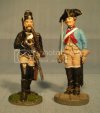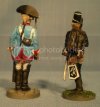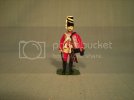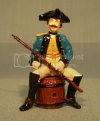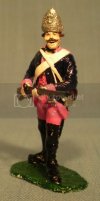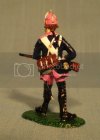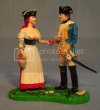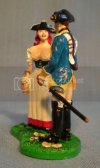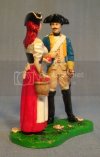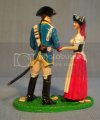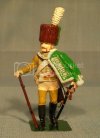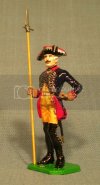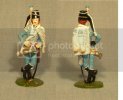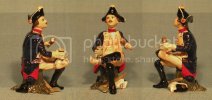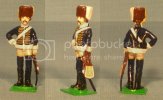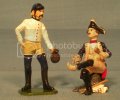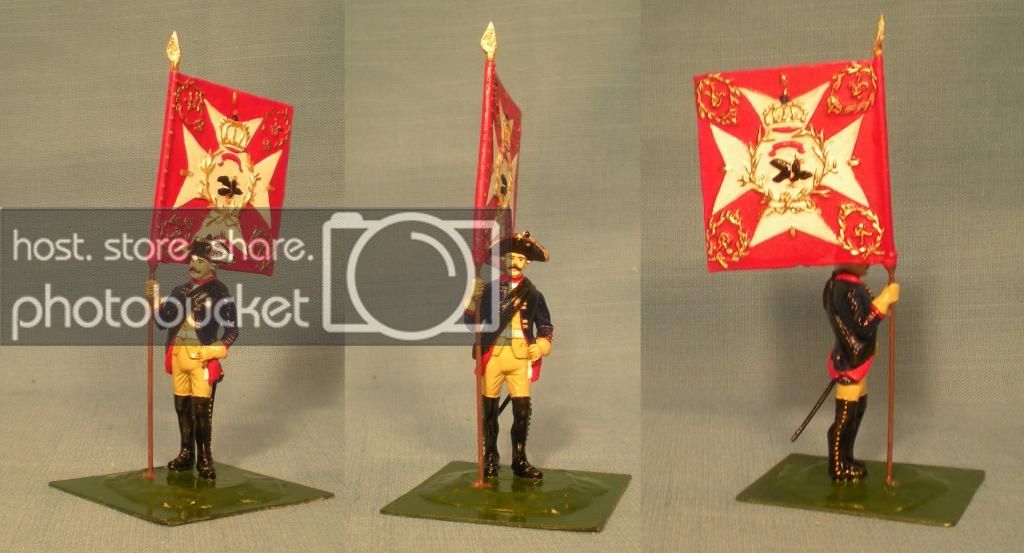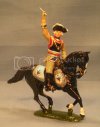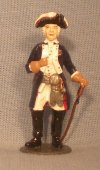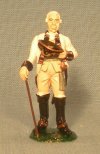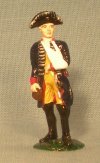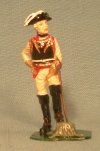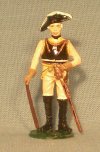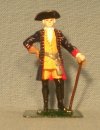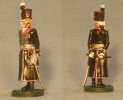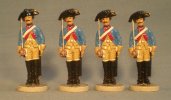the Baron
Ich bin ja, Herr, in Deiner Macht
- Joined
- May 12, 2009
- Messages
- 2,263
Hi, all! I know it's been a while since I've added any figures to the collection. As you may have seen, I've been busier in the scale modeling side of the hobby for a couple of months.
But this morning, I bring you a recent addition to the collection, another dragoon:
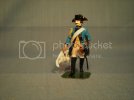
The casting is another Stadden 54mm. I've painted him as a dragoon of the 1st Regiment, the Zastrow Dragoons, at the time of the Seven Years War. We see him returning home, having "requisitioned" his dinner ("organized", the Germans say).
From another angle:
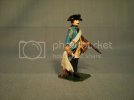
What makes this figure different is the goose. It represents my first completed sculpting effort. I got this figure off eBay, and the pose suggested to me a hunter returning with his catch. So I decided that this would be a good place to start working with proper sculpting techniques.
It was a toss-up between flesh or fowl for his catch. I thought of a rabbit or a brace of rabbits, or an Auerhahn, a ground fowl similar to a grouse. In the end, I settled on a goose.
A view from the rear:
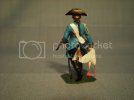
I know that in my previous post, I mentioned two dragoons, and I do have the other one, but as I got to work on him, I noticed that the casting is of an Austrian dragoon, so he got a new uniform, but I have to add some finishing touches, before I can post a picture of him.
Till the next time, I hope you enjoy the pics!
YbiC
Brad
But this morning, I bring you a recent addition to the collection, another dragoon:

The casting is another Stadden 54mm. I've painted him as a dragoon of the 1st Regiment, the Zastrow Dragoons, at the time of the Seven Years War. We see him returning home, having "requisitioned" his dinner ("organized", the Germans say).
From another angle:

What makes this figure different is the goose. It represents my first completed sculpting effort. I got this figure off eBay, and the pose suggested to me a hunter returning with his catch. So I decided that this would be a good place to start working with proper sculpting techniques.
It was a toss-up between flesh or fowl for his catch. I thought of a rabbit or a brace of rabbits, or an Auerhahn, a ground fowl similar to a grouse. In the end, I settled on a goose.
A view from the rear:

I know that in my previous post, I mentioned two dragoons, and I do have the other one, but as I got to work on him, I noticed that the casting is of an Austrian dragoon, so he got a new uniform, but I have to add some finishing touches, before I can post a picture of him.
Till the next time, I hope you enjoy the pics!
YbiC
Brad

